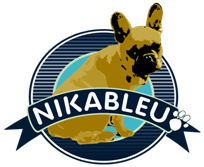New to owning a website?
You hopefully are working with a professional webmaster, but it’s still YOUR website. Like owning a new car, you’re not the mechanic, but you are the driver. It’s always good to know the basics.
Here are common terms associated with websites, and their definitions:
Subdomains:
A subdivision of your domain that has a different name. For example, shop.myhome.com would be a subdomain of www.myhome.com.
Text Editors:
For example,FrontPage is a Microsoft HTML editor. HTML is a basic coding language, and FrontPage Extensions allow you to use web pages created in FrontPage on your website. There are many companies who sell text editors.
Webmail:
The ability to access your domain email via the web. Having an email address with your domain name as an extension is considered much more professional than using hotmail.com or yahoo.com, for example.
Backups:
Web hosts should create automatic backups of your data so that you can rebuild your web site should anything happen to the company’s servers, and may also allow you to access the data you need to make your own backups.
Control Panel:
You may see this written as “cPanel”. A web interface that allows you to manage your account. Some of the many features include the ability to manage databases, file transfers, email accounts, and to monitor traffic statistics.
Databases:
Databases make it easier for you to update data in one place and have those changes applied all throughout the site. Common databases include MySQL and PostgreSQL.
Data Transfer:
Amount of data that may be transferred from your server to site visitors each month. Disk Space: Amount of storage you are entitled to on the hosting company’s server.
Domain Names:
A domain name is your address on the internet. For example, ‘myhome.com’ is a domain name; an exact address uses its URL: ‘http://www.myhome.com’. This should be done first, and really try to include your strongest keyword in it.
Logs & Stats Tools:
These tools access log files and statistics. Mailboxes: Number of email addresses you can have @yourdomain.com.
Multiple Domains:
Some web hosting services may let you host your site on multiple domains, or internet addresses. This can bring additional traffic to your page if people type in both domains to reach your company website.
Programming Languages:
Different languages (like PHP, Perl, Python, Ruby, etc.) that you can use to create content, scripts, and other features to add organization and interest to your website.
SSL:
Secure Sockets Layer, a system to encrypt (scramble) data so that it can’t be read by other parties, protects personal information like credit card numbers that may be provided in an online commercial transaction. When you see ‘https’ in your browser window instead of ‘http’ you know you are on a secure page. These are read by robots, not humans.

